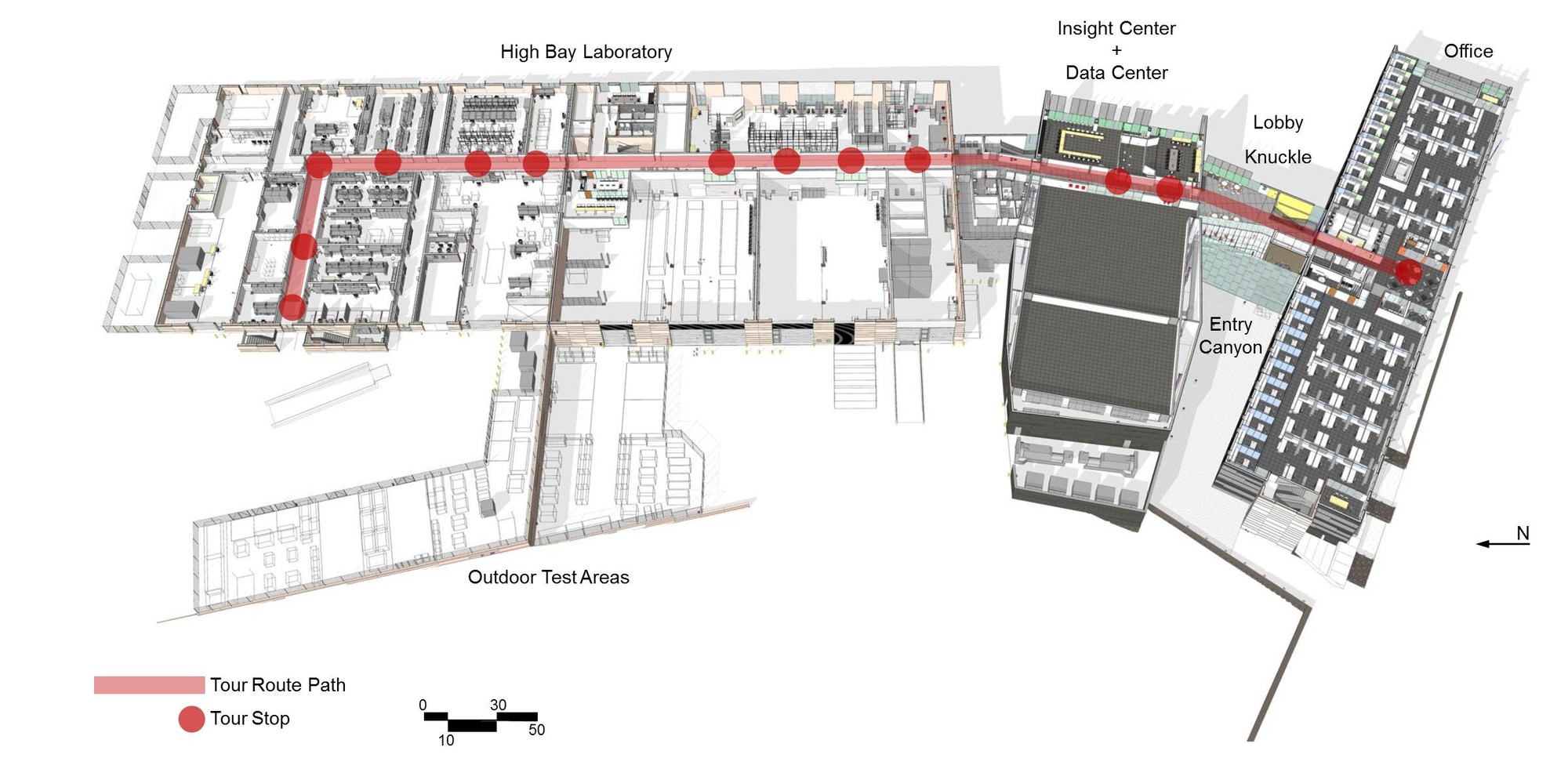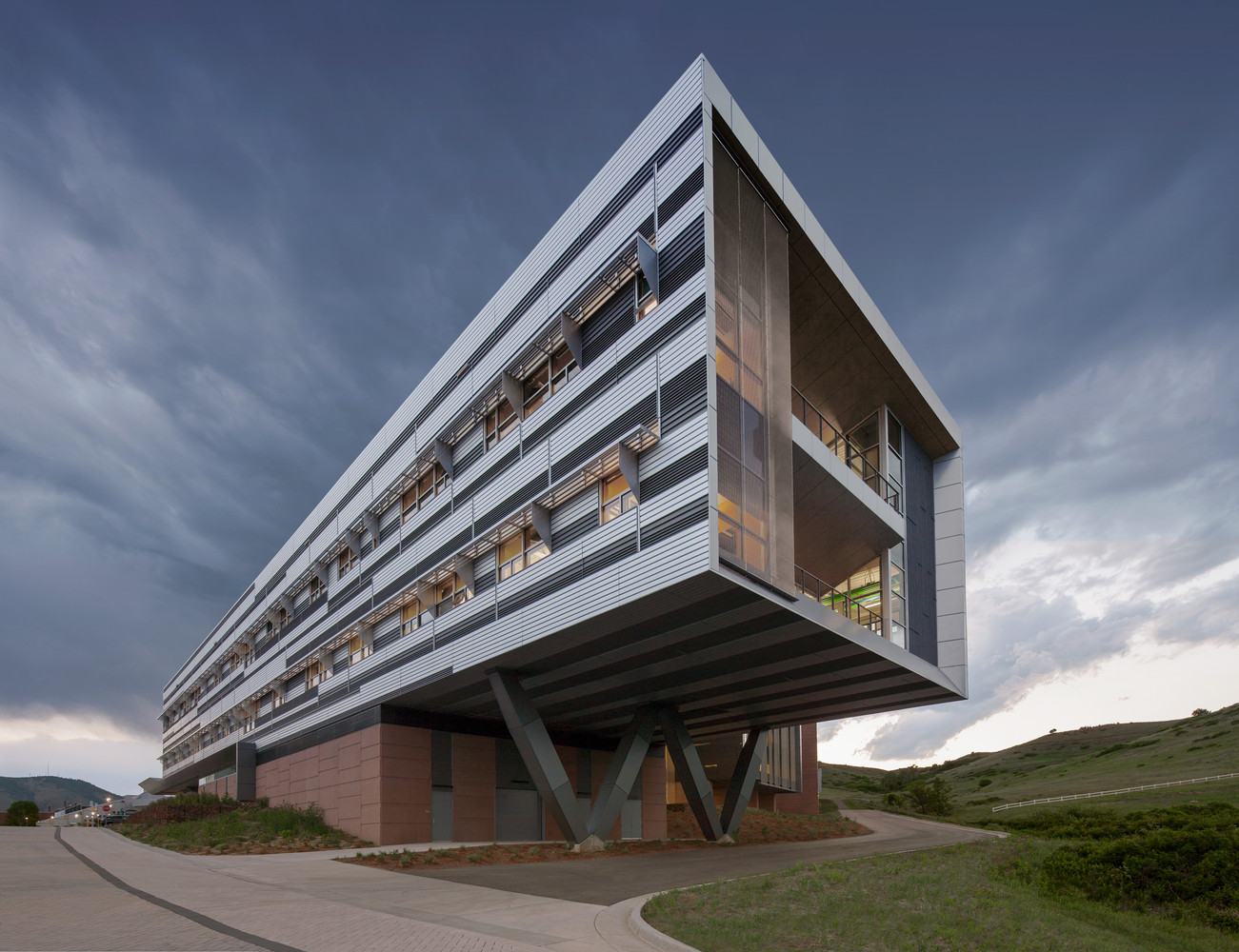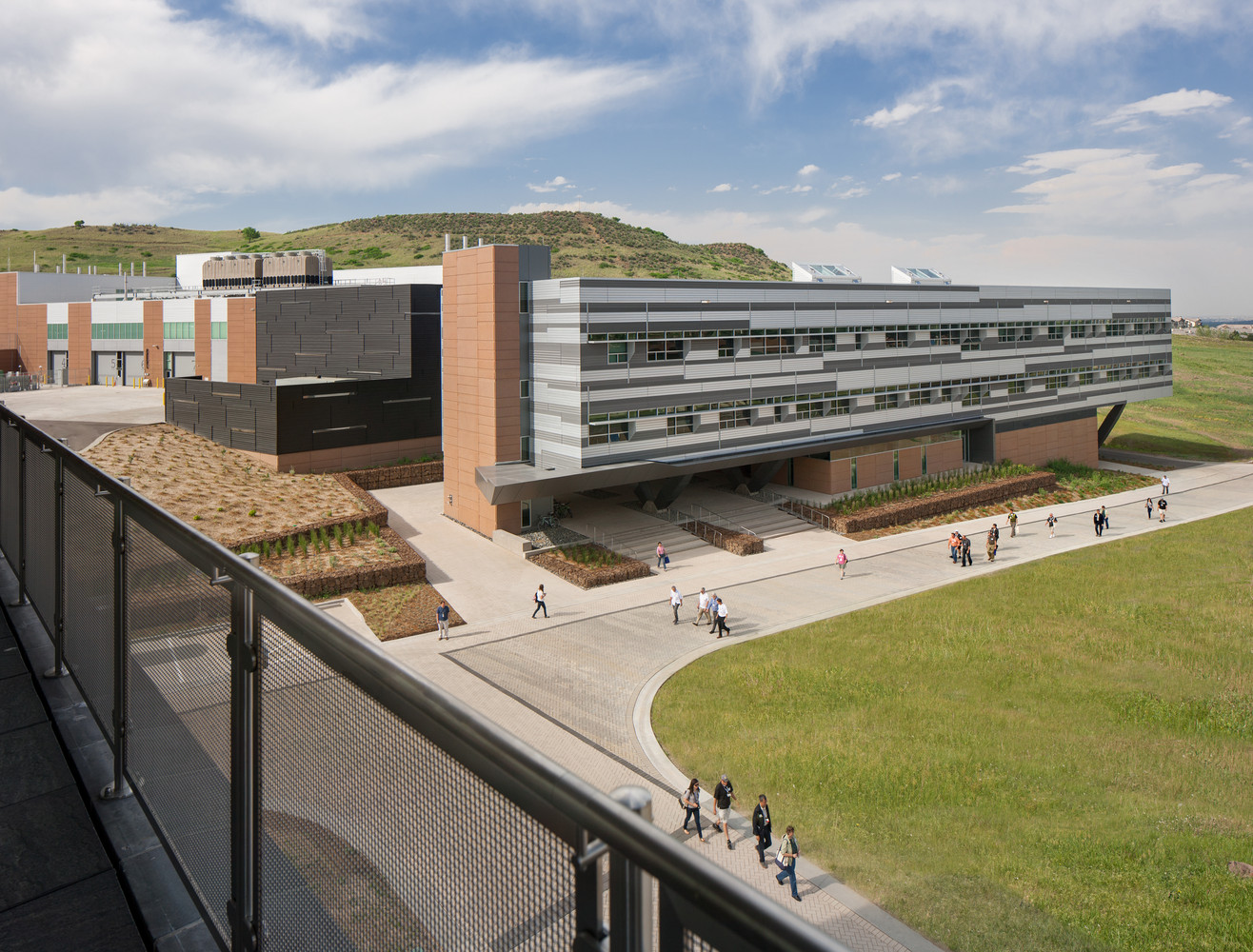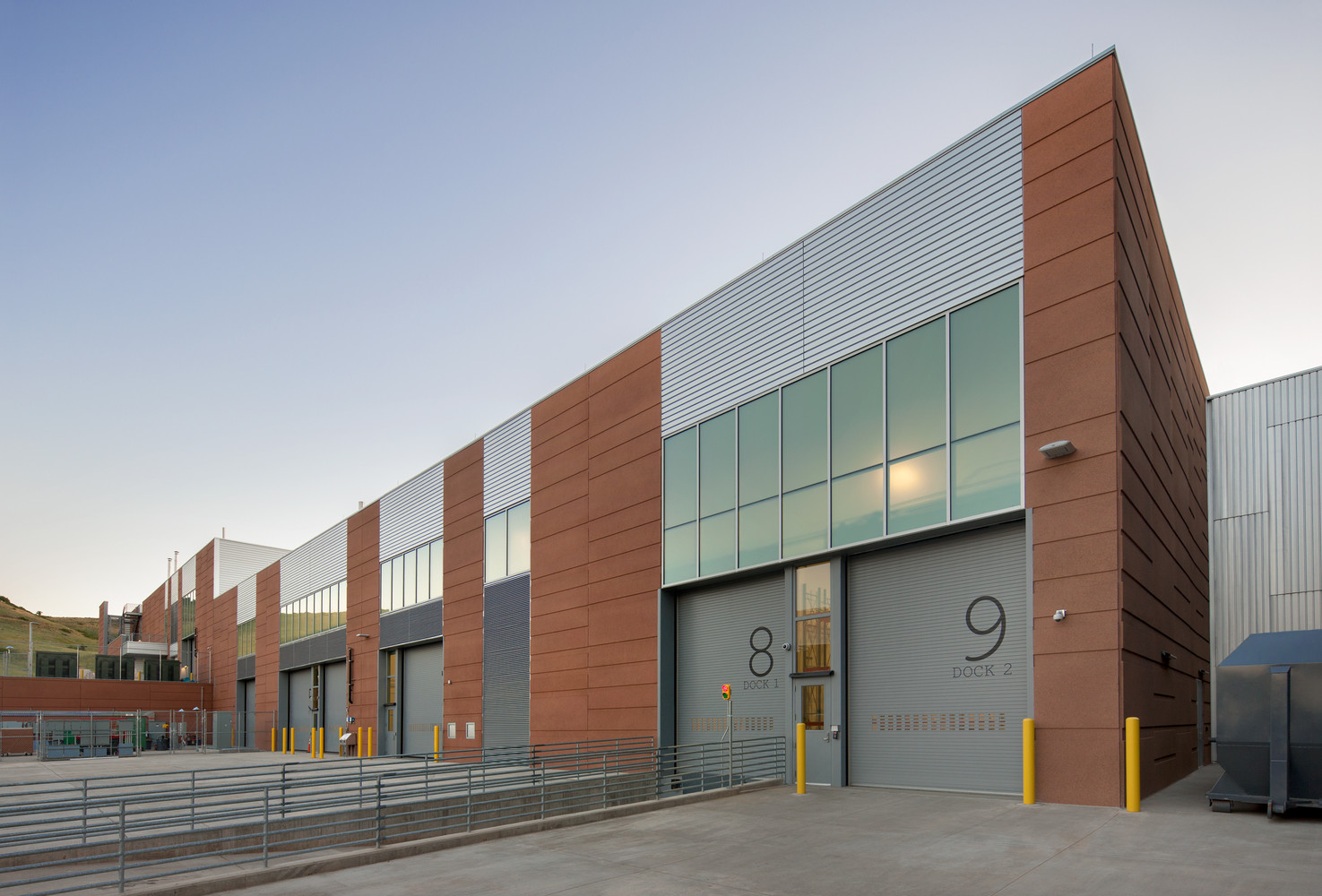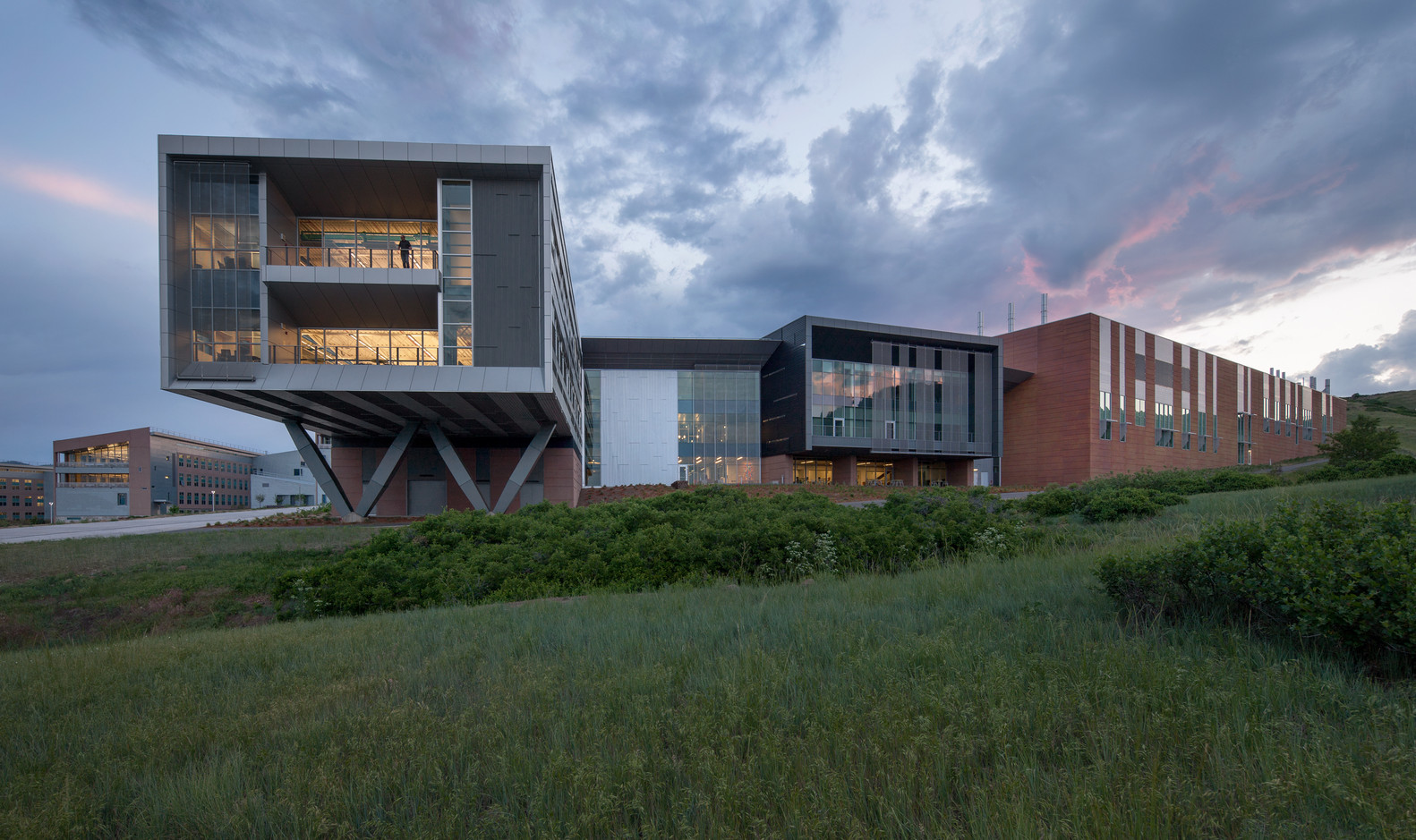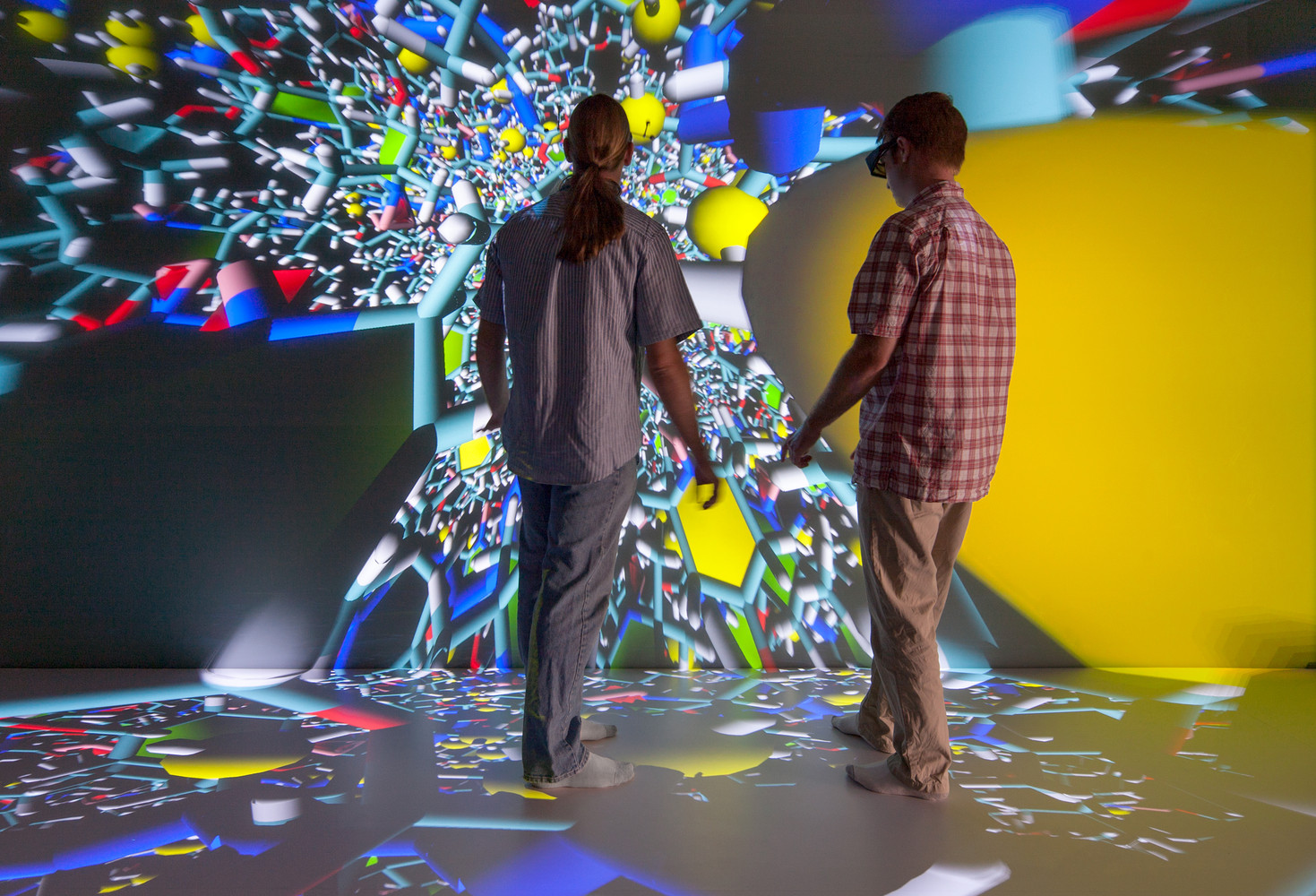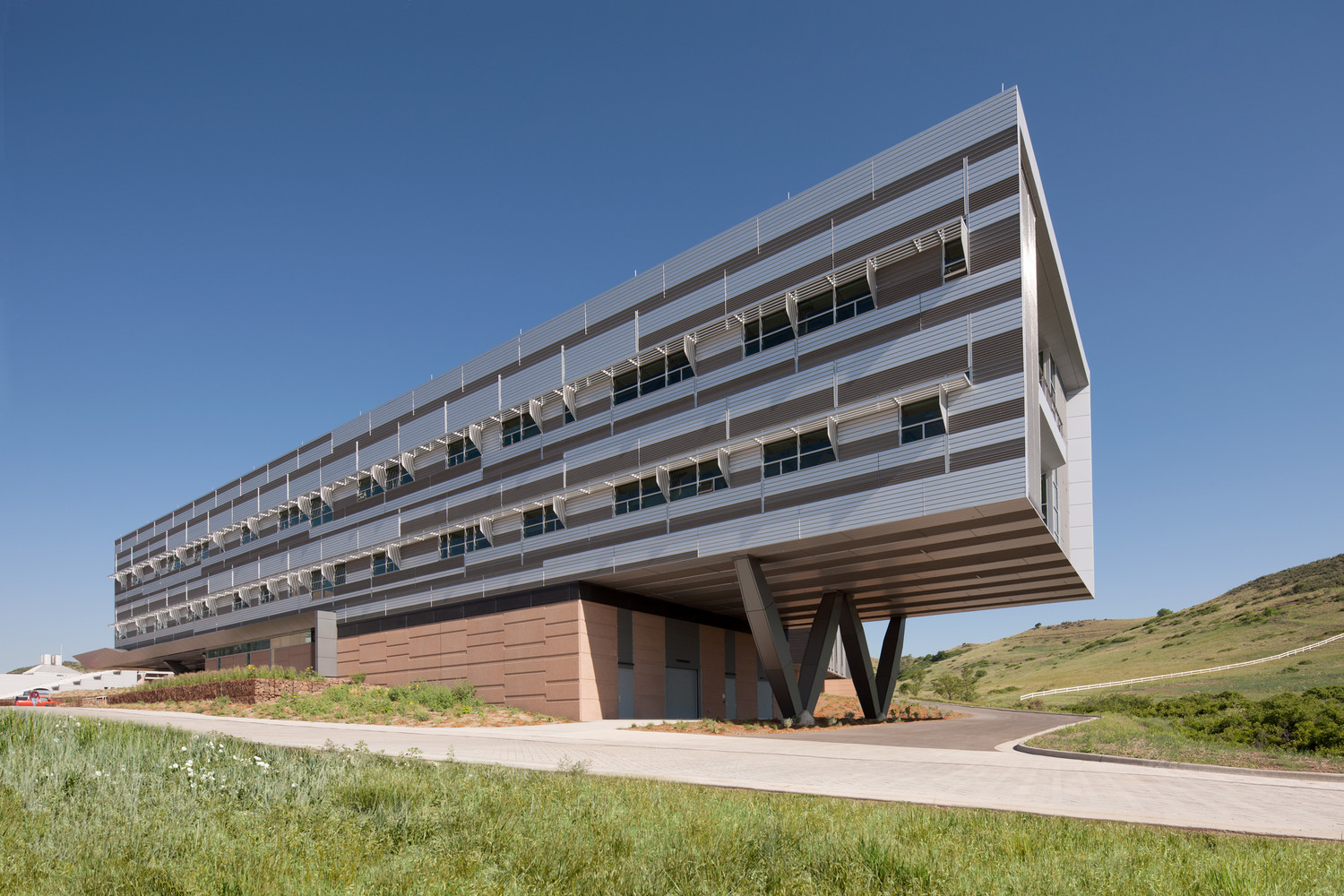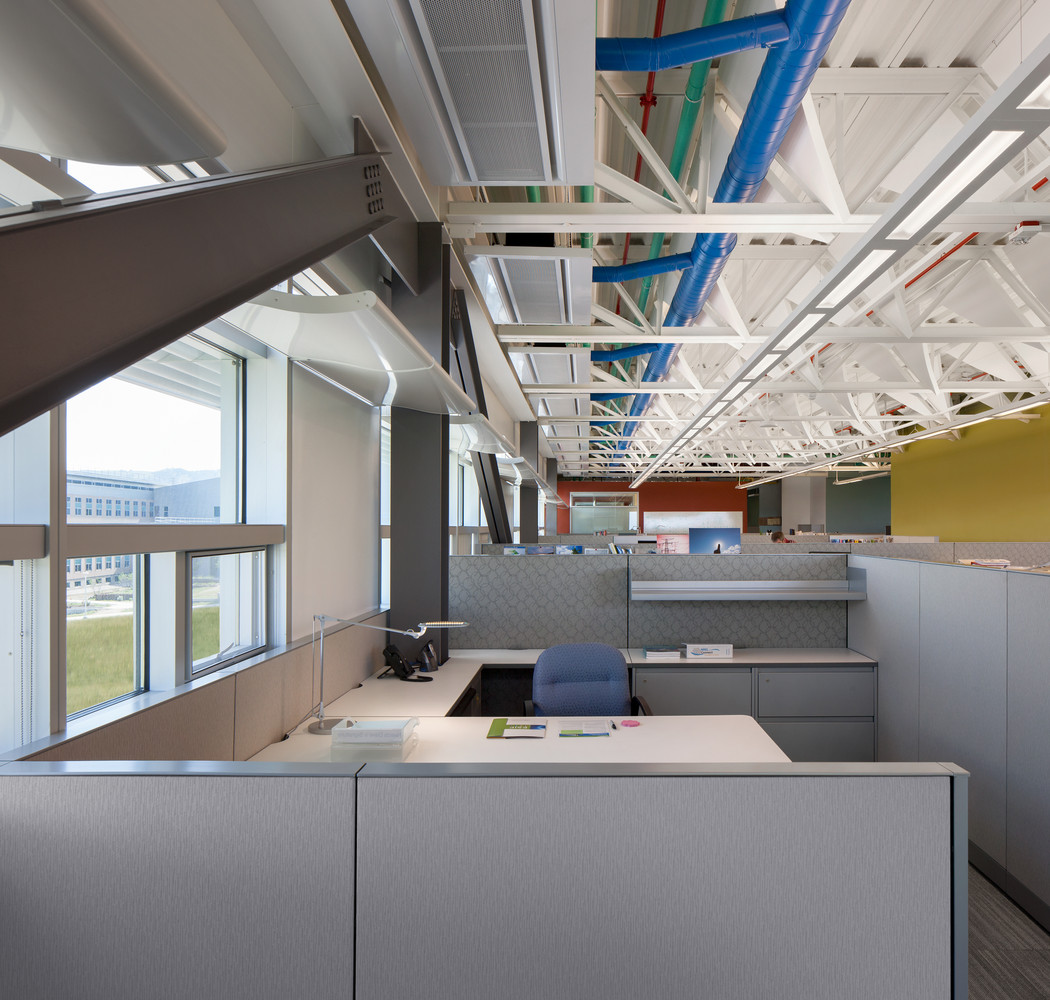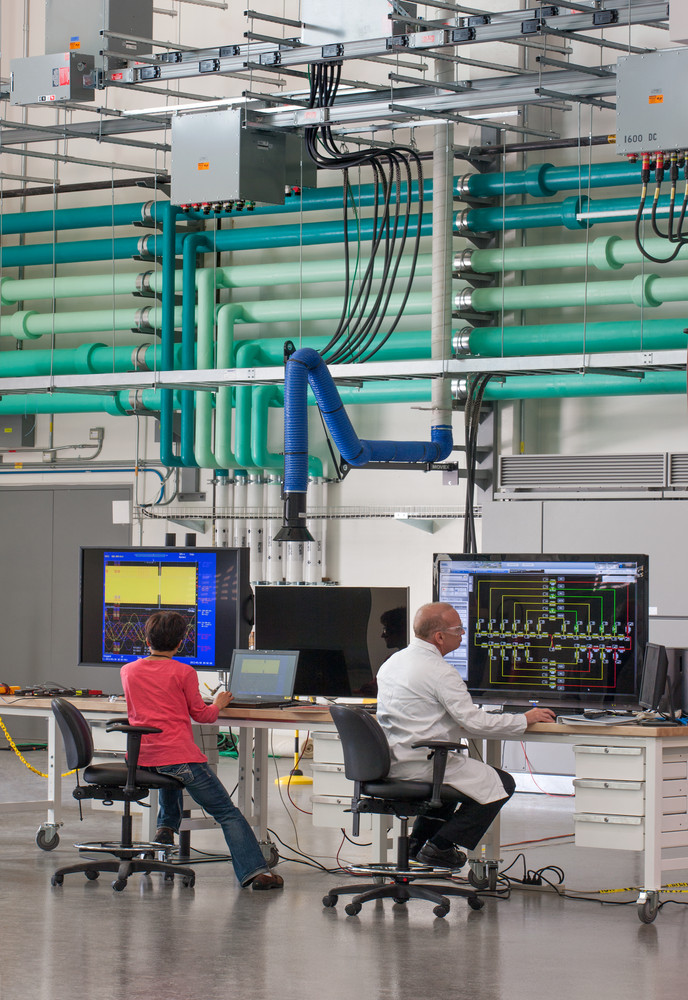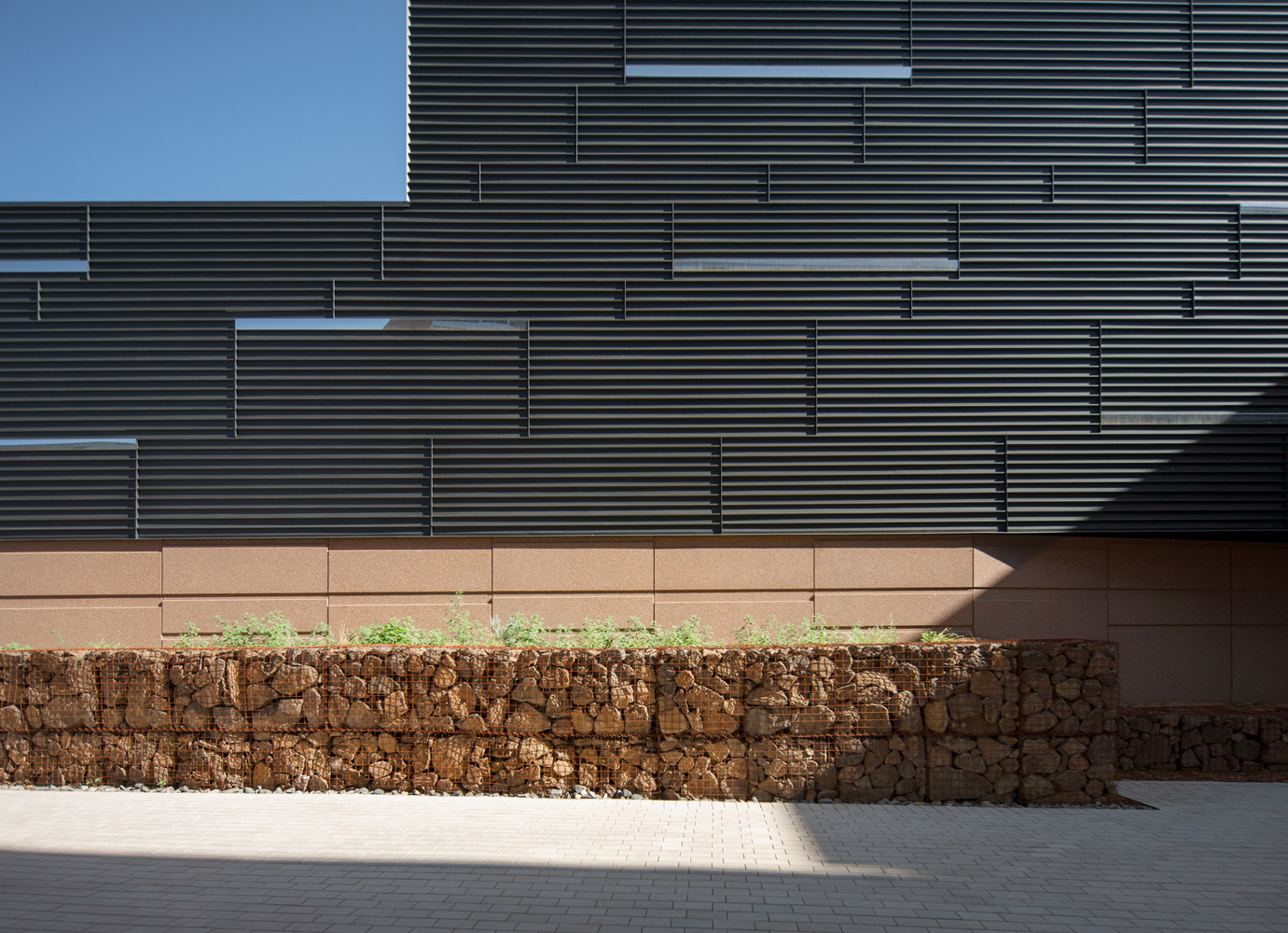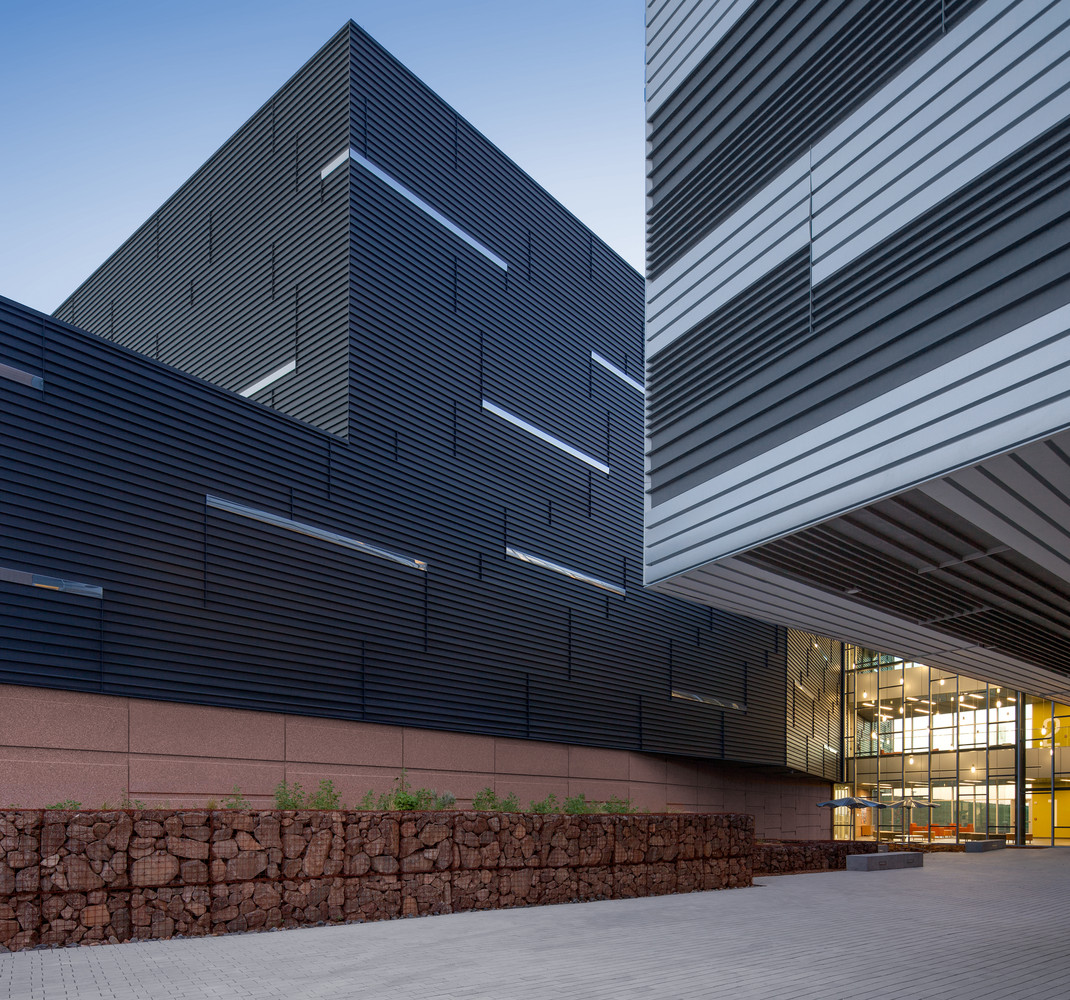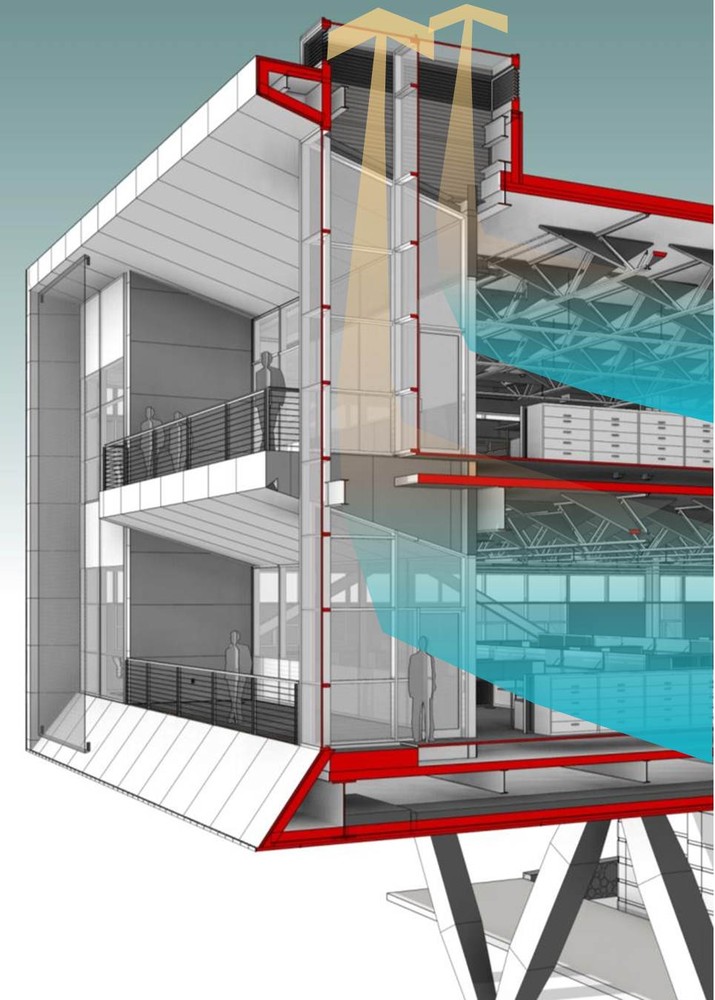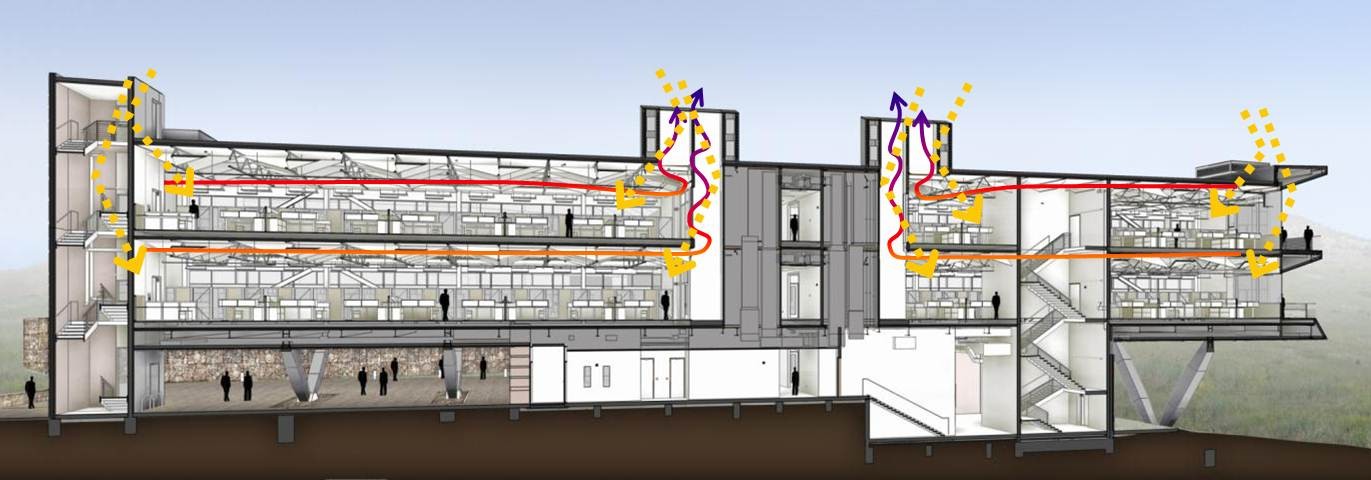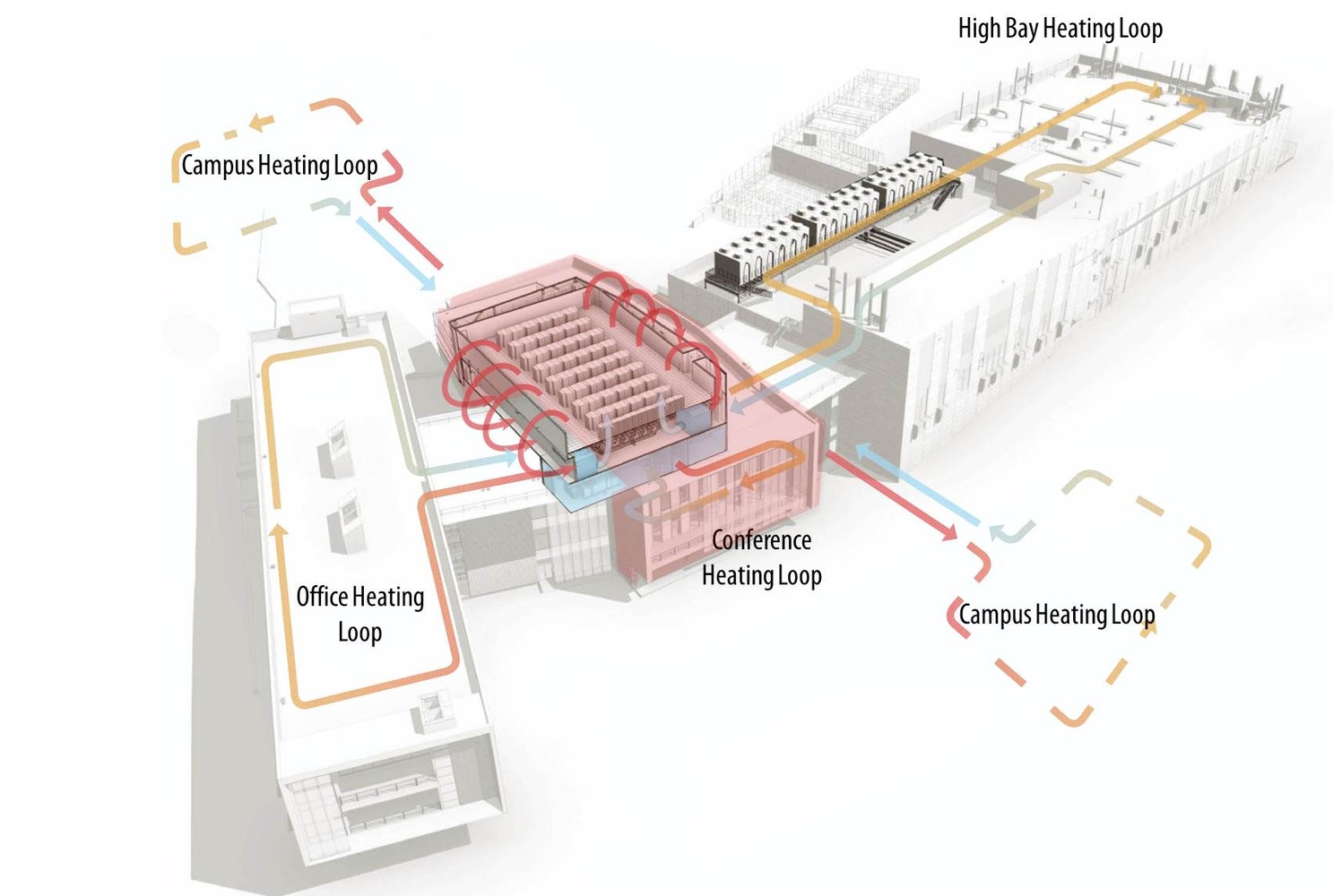架构师提供的文本描述。位于科罗拉多州金色的能源部国家可再生能源实验室(NREL)的1.35亿美元能源系统集成设施(ESIF)是可持续设计和节能性能的典范。ESIF为科学家和工程师在可再生能源技术的开发和交付方面创造了一个新的家园,并建立了世界上最强大和最节能的数据中心,专门致力于可再生能源和能效研究,这一先进的研究综合体将改变国家的能源基础设施。SmithGroupJJR是公认的建筑、工程和规划领域的领导者,曾担任该三层楼182,500平方英尺的研究中心的设计师.Je Dunn Construction作为设计建造企业的总承包商。
Text description provided by the architects. The $135 million Energy Systems Integration Facility (ESIF) at the Department of Energy’s National Renewable Energy Laboratory (NREL) campus in Golden, Colorado is a model in sustainable design and energy efficient performance. The ESIF creates a new home for scientists and engineers to collaborate on the development and delivery of renewable energy technologies and houses the most powerful and energy efficient data center in the world dedicated solely to renewable energy and energy efficiency research, this advanced research complex will transform the nation’s energy infrastructure. SmithGroupJJR, a recognized leader in architecture, engineering, and planning, served as designer of the three-story, 182,500-square-foot research complex. JE Dunn Construction performed as general contractor for the design-build venture.
© Bill Timmerman
(比尔·蒂默尔曼
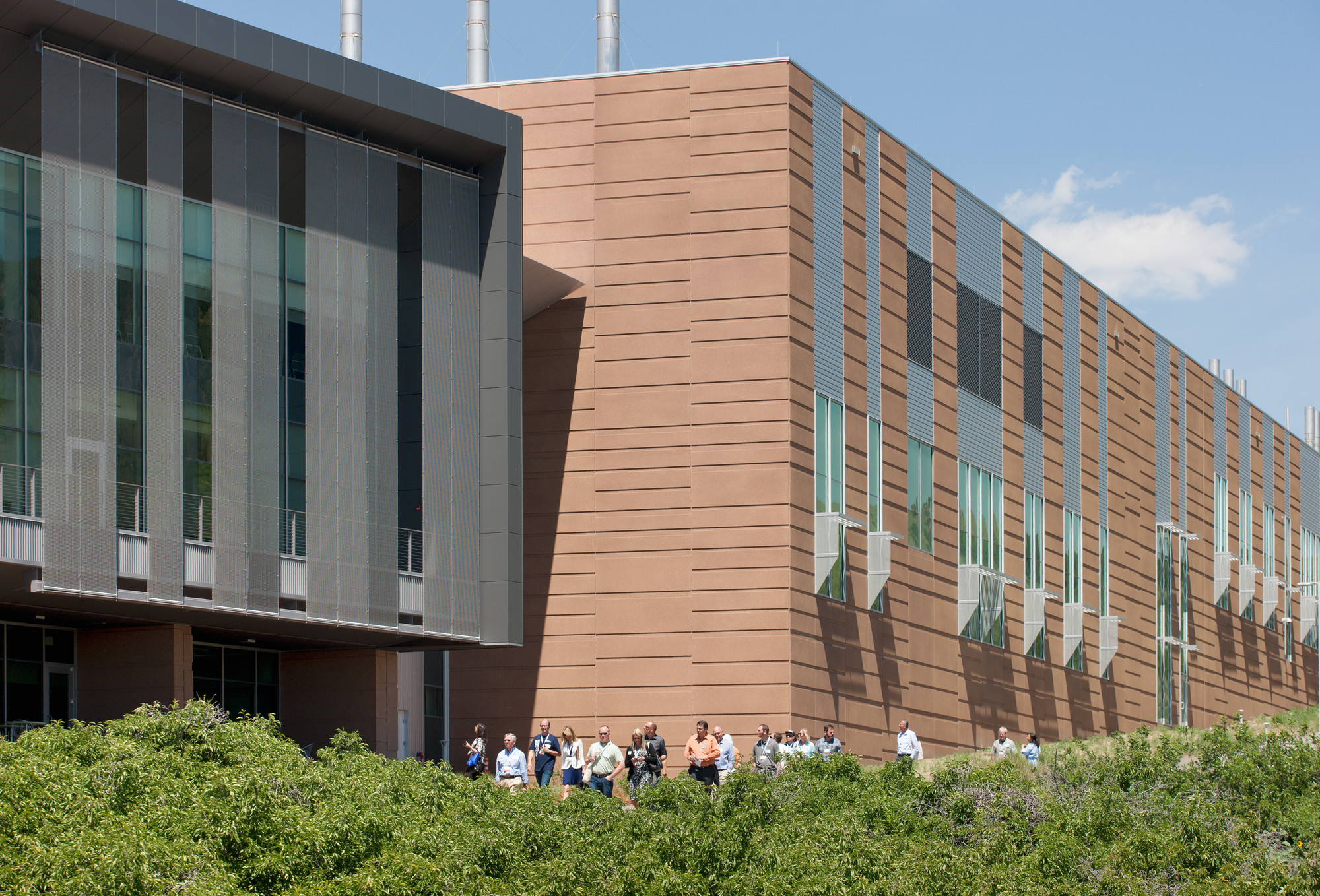
位于现有的SmithGroupJJR设计科学的东南方向
Located southeast of the existing SmithGroupJJR-designed Science & Technology Facility, the ESIF is the nation’s only facility that can conduct integrated megawatt-scale testing of the components and strategies needed to safely move clean energy technologies onto the electrical grid “in-flight” at the speed and scale required to meet federal policy. A showcase of sustainable design, the ESIF incorporates the best in energy efficiency, environmental performance, and advanced controls using a “whole building” integrated design approach that complies with Energy Star standards. SmithGroupJJR and JE Dunn worked together to support the Department of Energy’s goal to develop an energy efficient building that imparts minimal impact on the environment. The ESIF was designed to earn a LEED Platinum rating from the U.S. Green Building Council.
© Bill Timmerman
(比尔·蒂默尔曼
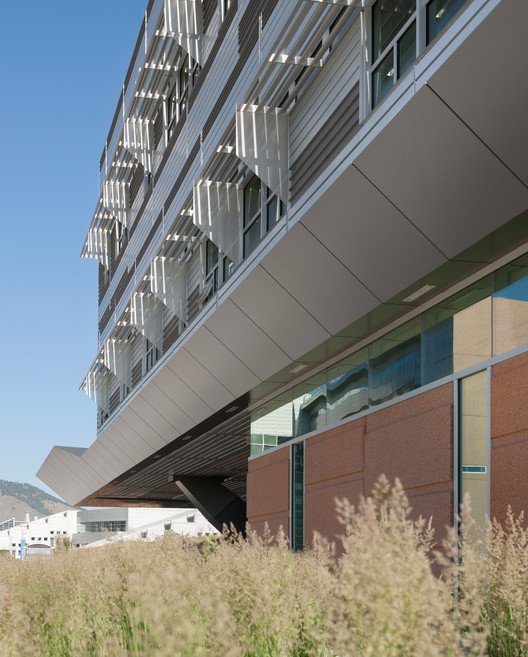
研究和测试环境包括14个实验室、一个高海湾控制室、一个室外测试平台、一个超绿色办公大楼和一个高性能计算数据中心,该设施容纳了200名致力于向主流市场提供新兴太阳能、氢、生物燃料和风能技术的研究人员。实验室的核心是研究电气配电总线(REDB),这是美国第一个集成的、兆瓦级的硬件在环实时仿真系统。REDB允许研究人员和制造商在实时仿真中在全功率和实际负载水平上进行集成测试,并在上市前评估组件和系统性能。一个小型的高性能计算数据和可视化中心扩展了ESIF的研究能力,并允许对材料特性、过程和完全集成的系统进行大规模建模和模拟,通过直接实验来进行成本上的限制。可视化中心提供了在三维沉浸式虚拟环境中体验这些复杂系统模拟的能力。
Research and Testing Environments Comprised of 14 laboratories, a high bay control room, outdoor testing pads, an ultra-green office building, and a high performance computing data center, the facility houses 200 researchers dedicated to delivering emerging solar, hydrogen, biofuel and wind technologies to the mainstream marketplace. Central to the laboratories is the Research Electrical Distribution Bus (REDB), the nation’s first integrated, megawatt-scale hardware-in-the-loop real-time simulation system. The REDB allows researchers and manufacturers to conduct integration tests at full power and actual load levels in real-time simulation, and evaluate component and system performance before going to market. A petascale high performance computing data and visualization center extends the ESIF’s research capabilities and enables large-scale modeling and simulation of material properties, processes, and fully integrated systems that would be cost-prohibitive to study by direct experimentation. The visualization center offers the ability to experience these complex systems simulations in a three-dimensional, immersive virtual environment.
© Bill Timmerman
(比尔·蒂默尔曼
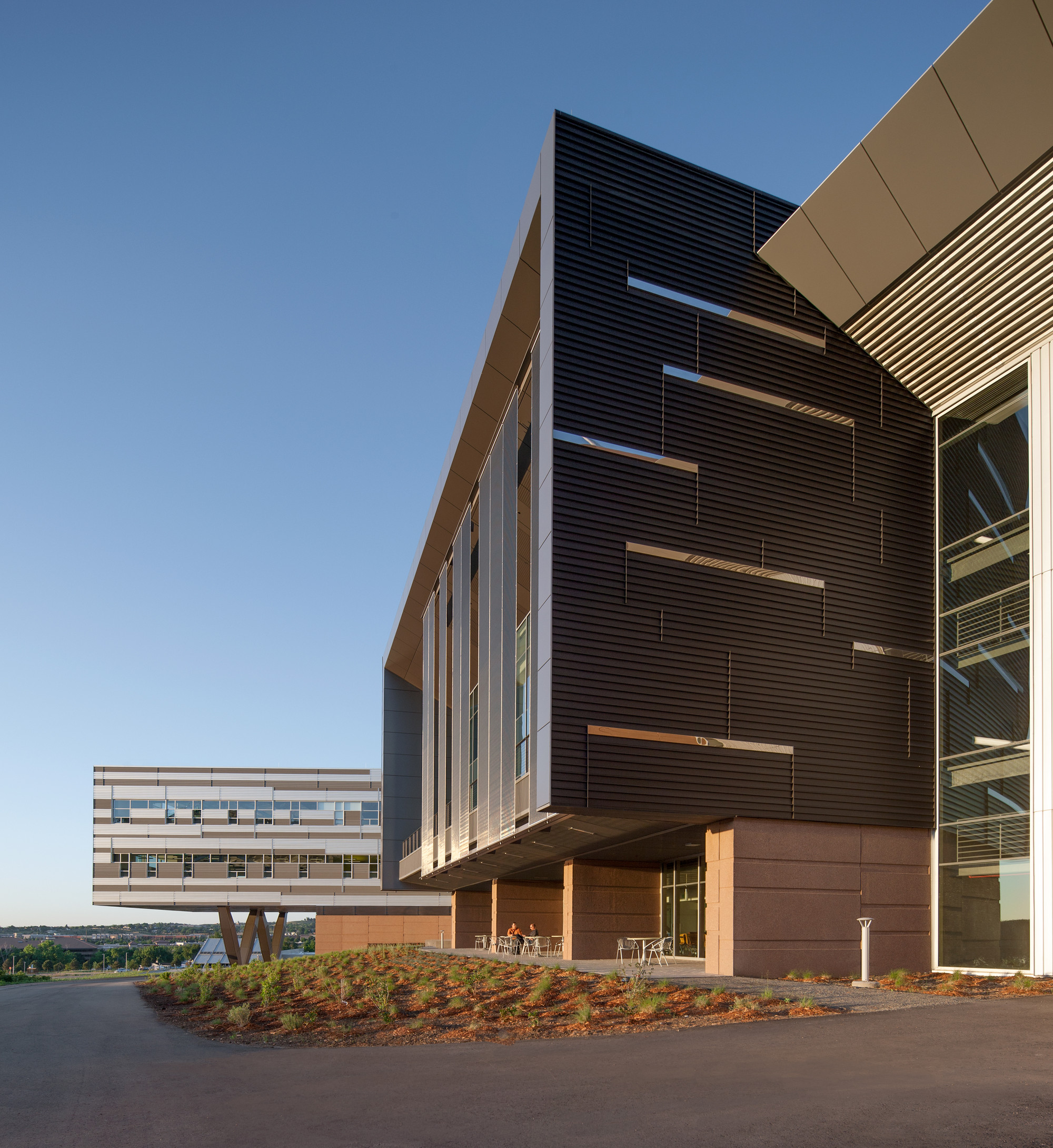
针对能源消耗率极低的可持续战略,该团队采用了一系列先进技术和最佳实践来平衡建筑物的能量和性能目标:-可操作的窗户使整个建筑的自然冷却和通风-太阳能风扇帮助从办公环境中提取热负荷垂直和水平外部遮阳装置控制日光进入建筑物和减少太阳热增益-大的漫射面积。牧师的玻璃和15英尺长的天窗将日光投射到地板中央-办公室和实验室大楼每天上午10点至下午2点关闭电灯-过程和实验中的电能得到管理,收集并转移到其他实验室同时使用/再利用来自数据中心的余热,在冬季的几个月里被收集并再用于加热该设施,并出口到校园的其他部分。
Sustainable Strategies Targeting stringently low energy consumption rates, the team employed a range of advanced technologies and best practices to balance the building’s energy and performance goals: – Operable windows enable natural cooling and ventilation throughout the building – Solar powered fans aid in extracting heat load from office environments – Vertical and horizontal exterior shading devices control daylight entering the building and mitigate solar heat gain – Large expanses of diffuse clerestory glazing combined with 15-foot long skylights deliver daylight deep into the middle of the floor plates – Electrical lights are shut off from 10:00 am to 2:00 pm daily in the office and laboratory buildings – Process and electrical energy from experiments is managed, harvested and transferred to other laboratories for simultaneous use/reuse – Waste heat from the data center is captured and reused to heat the facility during winter months, and is also exported to other parts of the campus
© Bill Timmerman
(比尔·蒂默尔曼
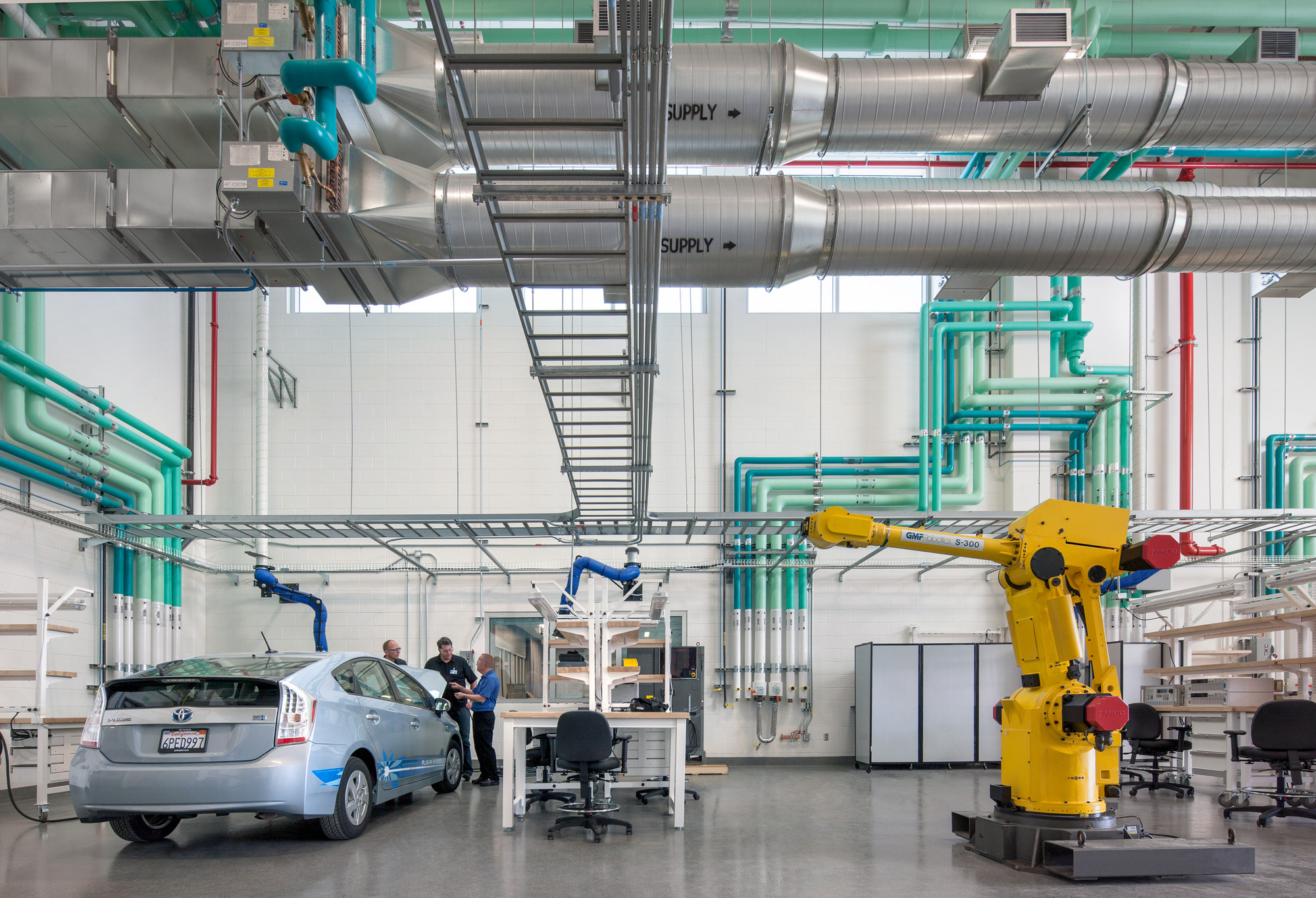
Floor Plan
